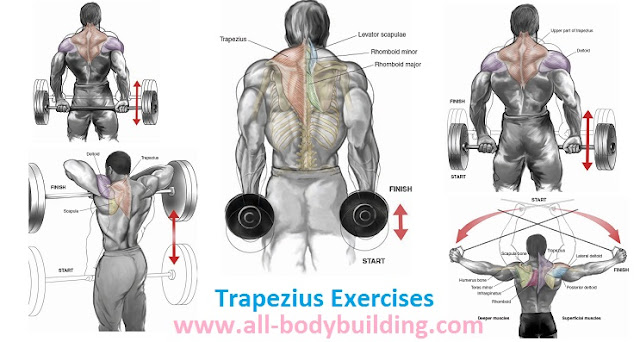How many times have you noticed a person walking on the beach with a huge upper back and shoulders? You may have also noticed how some guys can fill the neck out on their t-shirts with mounds of muscles. This is the muscle that you are noticing and it is called the trapezius. Trapezius muscles can be difficult muscles to work, because it is difficult to isolate the muscle. However, the right kind of exercises will lead to significant improvements in terms of size and strength of the trapezius muscle.
First, you need to understand where the trapezius is located and what kind of activity or movement it performs. It is located on the top of the upper back and allows you to shrug your shoulders to the sky and also slightly helps with raising the arms to the side.
To properly work the trapezius you must know the specific angles to work the muscle with the exercises. By working the trapezius in many different angles you will develop the muscle to its fullest extent and before soon you will notice that you are the guy everyone is admiring. So let's learn how to work the muscle.
As with any exercise program you should always have a good warm up for at least 10-15 minutes of light cardiovascular work to get the heart pumping and blood flowing before the trapezius exercises.
Start with a weight you can handle easily. You can use dumbbells or a barbell with the proper weight. The key to the exercises are to do proper form and perform at least three sets with each set consisting of 8-12 reps.
Shoulder Shrugs: It's a simple exercise that all you have to do is shrug their shoulders while holding a barbell or dumbbells. Make sure the palms of your hands are facing you while gripping the weight.
Upright Rows: Start by standing in a comfortable position with the weight in front of you resting in front of your thighs. Your palms should be facing you while holding the weight. Pull your hands up to your chin and keep your elbows laterally. Be careful to ensure that at the top position your elbows are higher than your hands so you work your trapezius and do not hurt yourself.
Behind The Back Barbell Shrugs: Stand in a comfortable position with the barbell behind your back. Grip barbell with palms facing up to the sky. Now shrug your shoulders to raise and lower the weight slowly.
Finally, make sure you have the correct weight for your exercises to work the trapezius muscle to its full potential. It will take some time for the muscle to grow, but keep with it and, as always eat the proper diet to allow good muscle recovery. Try it and before long your trapezius muscle will burst out of your shirt and making heads turn.


































